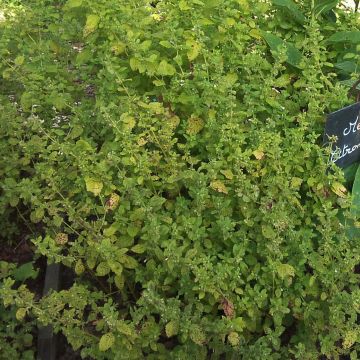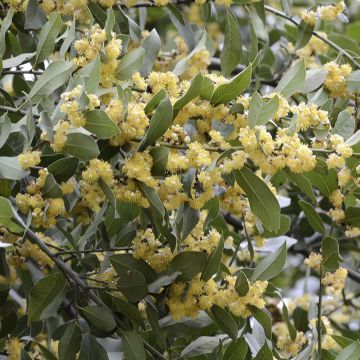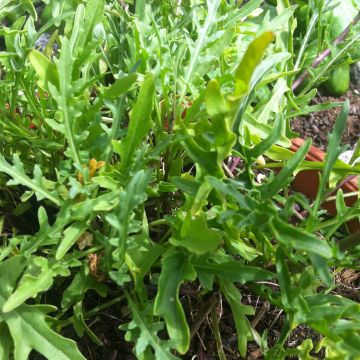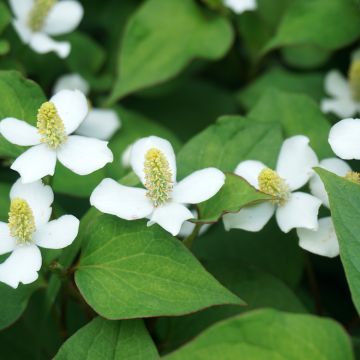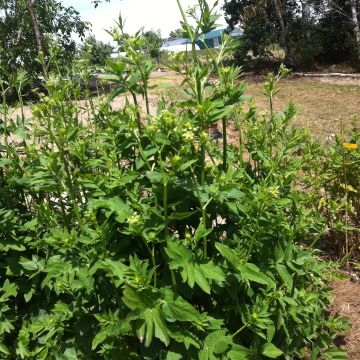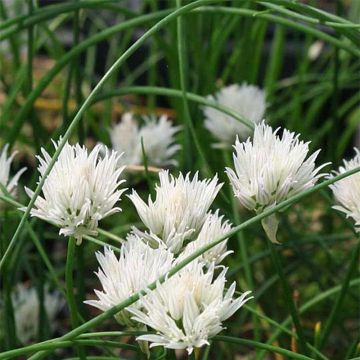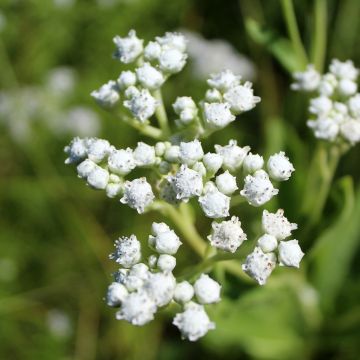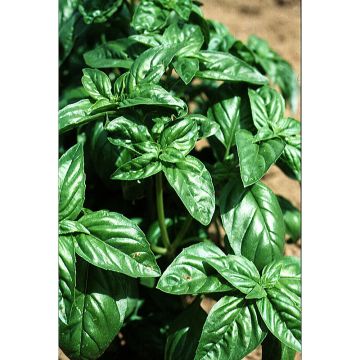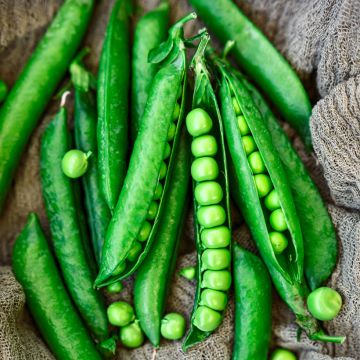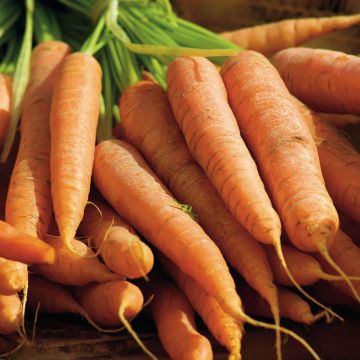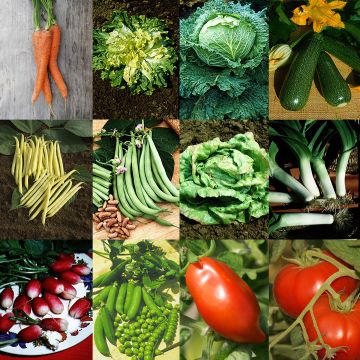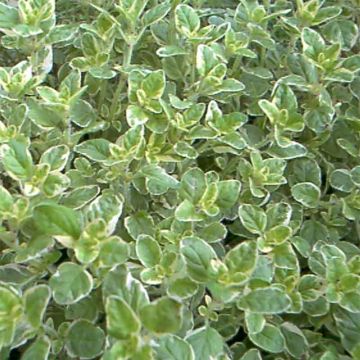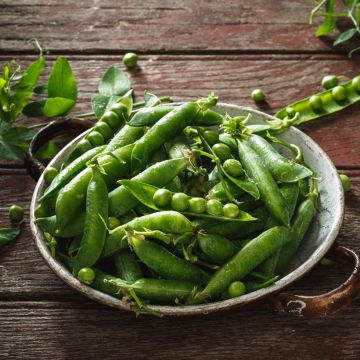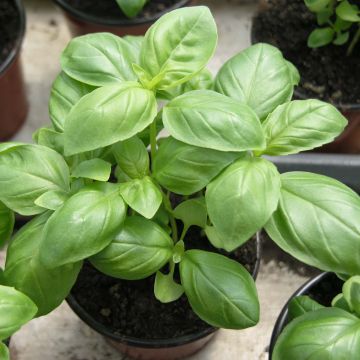Shipping country and language
Your country of residence may be:
Your country of residence is:
For a better user experience on our website, you can select:
Your shipping country:
Andorra
Austria
Belgium
Bulgaria
Canada
Chile
Croatia
Cyprus
Czechia
Denmark
Estonia
Finland
France
Germany
Greece
Hungary
Iceland
Ireland
Italy
Latvia
Lithuania
Luxembourg
Malta
Monaco
Netherlands
Poland
Portugal
Romania
Slovakia
Slovenia
Spain
Sweden
Switzerland
United Kingdom
We only deliver seed and bulb products to your country. If you add other products to your basket, they cannot be shipped.
Language:
French
German
Spanish
English
My Account
Hello
My wish lists
Plantfit
Log in / Register
Existing customer?
New customer?
Create an account to track your orders, access our customer service and, if you wish, make the most of our upcoming offers.
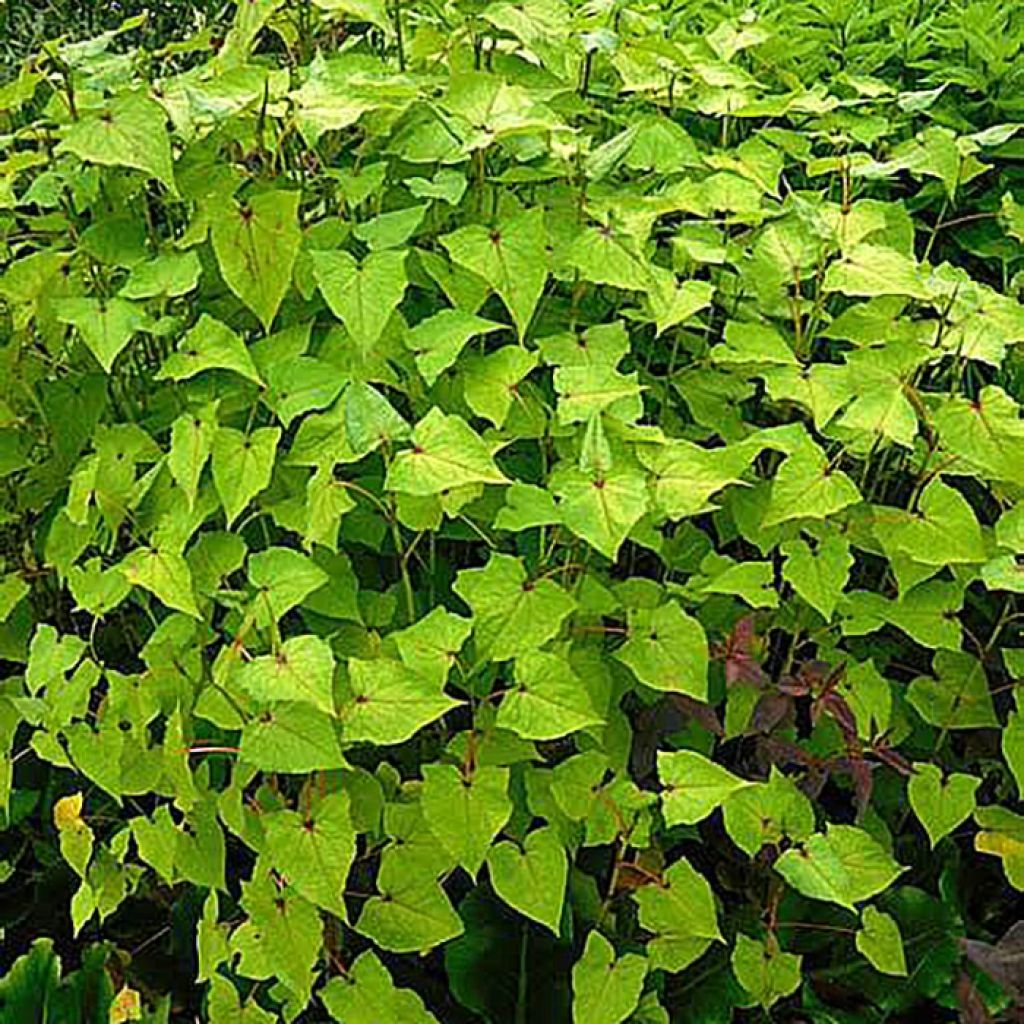

Epinard d'Asie, Epinard arbustif - Fagopyrum dibotrys (F. cymosum)
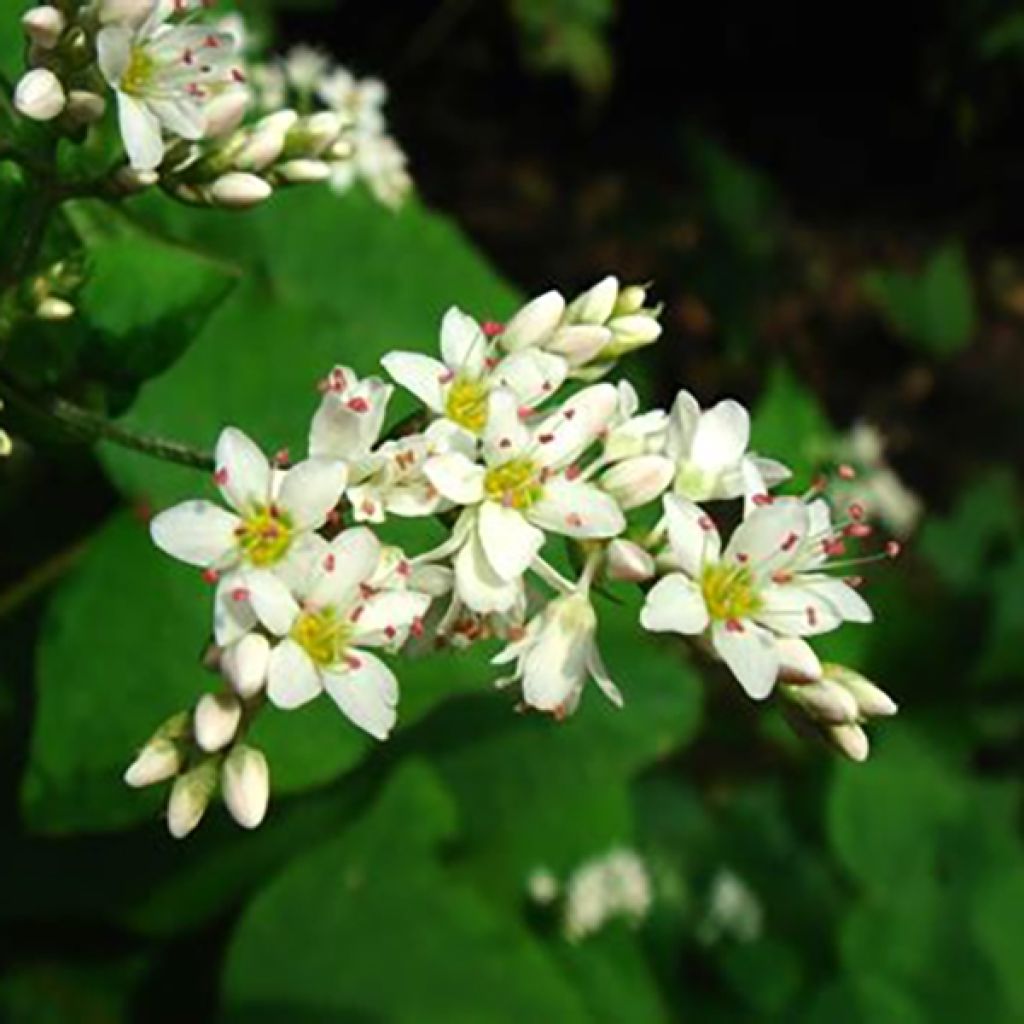

Epinard d'Asie, Epinard arbustif - Fagopyrum dibotrys (F. cymosum)
Tall Buckwheat - Fagopyrum dibotrys
Fagopyrum dibotrys
Tall Buckwheat
Arrived moldy in very little soil, brown roots... obviously... no recovery...
Marie, 14/02/2024
Why not try an alternative variety in stock?
View all →Order in the next for dispatch today!
Dispatch by letter from €3.90.
Delivery charge from €5.90 Oversize package delivery charge from €6.90.
More information
This item is not available in your country.
Schedule delivery date,
and select date in basket
This plant carries a 6 months recovery warranty
More information
We guarantee the quality of our plants for a full growing cycle, and will replace at our expense any plant that fails to recover under normal climatic and planting conditions.
From €5.90 for pickup delivery and €6.90 for home delivery
Express home delivery from €8.90.
Description
Tall Buckwheat, in Latin Fagopyrum cymosum, also known as Perennial Buckwheat, is a large perennial that is both ornamental and delicious and will delight enthusiasts of curiosities and gourmet gardeners. This plant forms a tall, airy tuft, and its leaves are consumed like spinach. It produces beautiful white flower panicles in late summer and turns red in autumn. A true perennial vegetable, ideal for permaculture, the plant is very hardy. Plant it in spring or autumn and harvest the young leaves as needed. The vegetation disappears in winter.
Tall Buckwheat (Fagopyrum dibotrys, syn. F. cymosum) is a perennial herbaceous plant native to southwestern China, India, Myanmar, and Vietnam. It is a shade-tolerant species that thrives in deep, rich, moist, and well-drained soil. It belongs to the family Polygonaceae, just like sorrel and spinach. It grows very quickly so make sure you have enough space to accommodate it. An adult plant will form a large, erect tuft 1.50m (5ft) tall and at least 1.50m (5ft) wide. The foliage is deciduous. It regrows after the last frost. The leaves are sagittate, meaning arrow-shaped, wrinkled, slightly fuzzy, rather flat, and fairly dark green. They turn red in autumn before falling. The flowering period is between August and October. It takes the form of slender white flower panicles that resemble those of buckwheat. They are highly attractive to butterflies, bees, and other pollinators. The seeds of Asian Buckwheat are also edible.
In terms of cooking: the stems and young leaves can be consumed raw or cooked, and their flavour resembles that of spinach, so they can be cooked in the same way. The seeds can be cooked, sprouted, or ground into flour. The flowers, on the other hand, have a spicy flavour that enhances salads.
Harvesting: Pick as needed, when the leaves are juvenile or mature, from spring until the first frost. The younger leaves, which are more tender, can be consumed raw. The older leaves are tougher and have a stronger flavour, making them more suitable for cooked dishes. Harvest leaf by leaf, by hand or with a knife.
Storage: The leaves of the perennial buckwheat should be consumed immediately after harvesting, as they do not keep well. However, after cooking, they freeze very well.
Gardening tip: To reduce watering, we recommend mulching the soil with thin, successive layers of clippings, preferably mixed with dead leaves. This protective layer helps the soil retain moisture and also reduces weed growth.
An ornamental plant: Tall Buckwheat will create a rustic atmosphere and add a beautiful touch of colour in autumn. In flower beds, it can be combined with many shade-tolerant plants that thrive in similar conditions: ferns, comfrey (Symphytum), hostas, silver candles, goat's beard...
Tall Buckwheat - Fagopyrum dibotrys in pictures
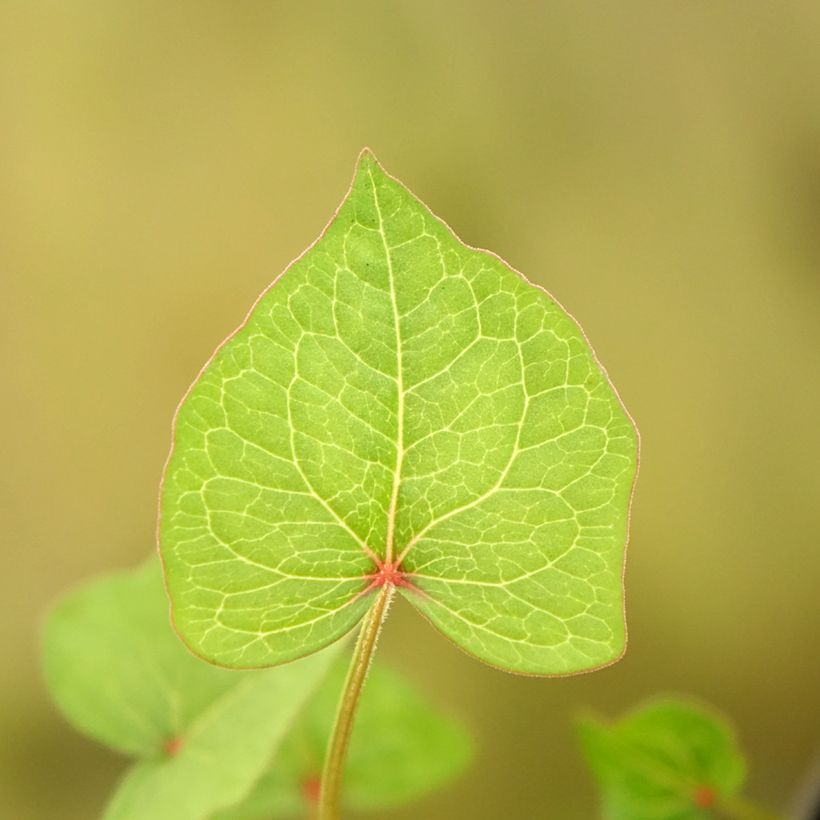

Harvest
Plant habit
Foliage
Planting and care
Tall Buckwheat prefers moist, rich and well-drained soil. It thrives in partial shade but can tolerate non-scorching sunlight. Planting can be done in spring (from March to May) or in autumn (September-October).
Allow some space for this tall perennial with slightly creeping roots. It is preferable to plant it in isolation.
In the ground: If necessary, add compost a few months before planting by loosening the soil to a depth of 5cm (2in). Space the plants 70cm (28in) apart. Dig a hole (3 times the size of the root ball), place the root ball inside, and cover it with fine soil. Firmly press down and water to keep the soil moist.
Regularly weed and hoe, especially at the beginning of the growing season. Water in cases of extreme heat. Mulch to retain moisture in the soil and reduce the need for watering. If your plants are being eaten by slugs or snails, place ashes or coffee grounds nearby, replenishing after rain. Apply compost on the surface at the end of winter.
Cut the stems at the end of the season, mulching the base of the plant is optional.
Cultivation
Care
Intended location
- , onOrder confirmed
Reply from on Promesse de fleurs
Haven't found what you were looking for?
Hardiness is the lowest winter temperature a plant can endure without suffering serious damage or even dying. However, hardiness is affected by location (a sheltered area, such as a patio), protection (winter cover) and soil type (hardiness is improved by well-drained soil).

Photo Sharing Terms & Conditions
In order to encourage gardeners to interact and share their experiences, Promesse de fleurs offers various media enabling content to be uploaded onto its Site - in particular via the ‘Photo sharing’ module.
The User agrees to refrain from:
- Posting any content that is illegal, prejudicial, insulting, racist, inciteful to hatred, revisionist, contrary to public decency, that infringes on privacy or on the privacy rights of third parties, in particular the publicity rights of persons and goods, intellectual property rights, or the right to privacy.
- Submitting content on behalf of a third party;
- Impersonate the identity of a third party and/or publish any personal information about a third party;
In general, the User undertakes to refrain from any unethical behaviour.
All Content (in particular text, comments, files, images, photos, videos, creative works, etc.), which may be subject to property or intellectual property rights, image or other private rights, shall remain the property of the User, subject to the limited rights granted by the terms of the licence granted by Promesse de fleurs as stated below. Users are at liberty to publish or not to publish such Content on the Site, notably via the ‘Photo Sharing’ facility, and accept that this Content shall be made public and freely accessible, notably on the Internet.
Users further acknowledge, undertake to have ,and guarantee that they hold all necessary rights and permissions to publish such material on the Site, in particular with regard to the legislation in force pertaining to any privacy, property, intellectual property, image, or contractual rights, or rights of any other nature. By publishing such Content on the Site, Users acknowledge accepting full liability as publishers of the Content within the meaning of the law, and grant Promesse de fleurs, free of charge, an inclusive, worldwide licence for the said Content for the entire duration of its publication, including all reproduction, representation, up/downloading, displaying, performing, transmission, and storage rights.
Users also grant permission for their name to be linked to the Content and accept that this link may not always be made available.
By engaging in posting material, Users consent to their Content becoming automatically accessible on the Internet, in particular on other sites and/or blogs and/or web pages of the Promesse de fleurs site, including in particular social pages and the Promesse de fleurs catalogue.
Users may secure the removal of entrusted content free of charge by issuing a simple request via our contact form.
The flowering period indicated on our website applies to countries and regions located in USDA zone 8 (France, the United Kingdom, Ireland, the Netherlands, etc.)
It will vary according to where you live:
- In zones 9 to 10 (Italy, Spain, Greece, etc.), flowering will occur about 2 to 4 weeks earlier.
- In zones 6 to 7 (Germany, Poland, Slovenia, and lower mountainous regions), flowering will be delayed by 2 to 3 weeks.
- In zone 5 (Central Europe, Scandinavia), blooming will be delayed by 3 to 5 weeks.
In temperate climates, pruning of spring-flowering shrubs (forsythia, spireas, etc.) should be done just after flowering.
Pruning of summer-flowering shrubs (Indian Lilac, Perovskia, etc.) can be done in winter or spring.
In cold regions as well as with frost-sensitive plants, avoid pruning too early when severe frosts may still occur.
The planting period indicated on our website applies to countries and regions located in USDA zone 8 (France, United Kingdom, Ireland, Netherlands).
It will vary according to where you live:
- In Mediterranean zones (Marseille, Madrid, Milan, etc.), autumn and winter are the best planting periods.
- In continental zones (Strasbourg, Munich, Vienna, etc.), delay planting by 2 to 3 weeks in spring and bring it forward by 2 to 4 weeks in autumn.
- In mountainous regions (the Alps, Pyrenees, Carpathians, etc.), it is best to plant in late spring (May-June) or late summer (August-September).
The harvesting period indicated on our website applies to countries and regions in USDA zone 8 (France, England, Ireland, the Netherlands).
In colder areas (Scandinavia, Poland, Austria...) fruit and vegetable harvests are likely to be delayed by 3-4 weeks.
In warmer areas (Italy, Spain, Greece, etc.), harvesting will probably take place earlier, depending on weather conditions.
The sowing periods indicated on our website apply to countries and regions within USDA Zone 8 (France, UK, Ireland, Netherlands).
In colder areas (Scandinavia, Poland, Austria...), delay any outdoor sowing by 3-4 weeks, or sow under glass.
In warmer climes (Italy, Spain, Greece, etc.), bring outdoor sowing forward by a few weeks.
